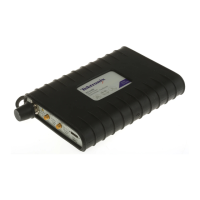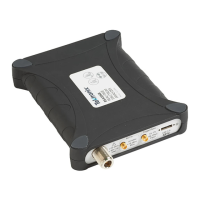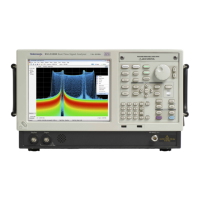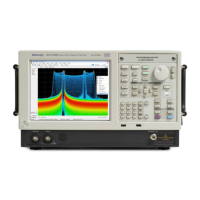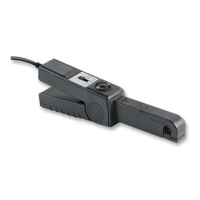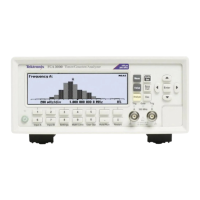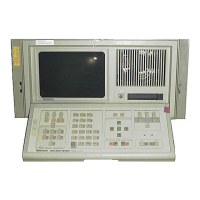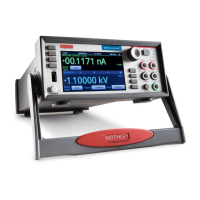Operation
Advanced Techniques
This section contains advanced operating techniques. For examples of practica l applications, see the RSA6100A Series
Real-Time Spectrum Analyzers and RSA5100A Series Real-Time Signal Analyzers Application Examples Manual.
Setting Up Triggering
The RSA6100A Series Real-Time Analyzers and RSA5100A Series Real-Time Analyzers offer real-time frequency domain
triggering (
options 02 and 52) and frequency edge triggering in addition to power-level triggers, line trigger, runt trigger, and
external triggers. It uses a trigger event as a reference point in time for the seamless acquisition of the signal. This allows the
analyzer to store both pretrigger and posttrigger information.
The analyzer has two triggering modes:
Free Run mode. In Free run m ode, the instrument initiates acquisitions without considering any trigger conditions. It
is a fast and easy way to see the signals. Free Run is usually adequate for the Spectrum display unless you need to
specify a particular time at which to collect the data record.
Triggered mode. In Triggered mode, the instrument initiates an acquisition when a trigger event is recognized. The
conditions that define a trigger event depend on the selected trigger source. There are several source selections available for
choosing the signal to monitor for a trigger event.
Once you select the Triggered mode, you must select the source. The trigger sources are:
RF Input
Trig In
Trig2In
Gated
Line
Once you select the trigger source, you can set additional parameters to s pecify the trigger event. If you specify the RF Input
as the trigger source, you can chose from two trigger types:
DPX Density Triggering. This trigger type enables the instrument to capture any signal you can see in the DPX display,
including difficult to see signals hiding beneath other signals that have a higher amplitude or a greater repetition rate. Using
the Trigger On This™ feature, you can draw a box around the area of interest in the graph, set a Density threshold, and
the instrument will trigger when the measured Density exceeds your threshold.
Time Qualified Triggering. Time Qualified triggers allow you to trigger the instrument based on when signal transitions
occur in time. You c an apply time qualification to the basic trigger types. For example, if you select the Power type and
configure it to trigger on a r ising edge, Time Qualification allows you to screen rising-edge events based on how long the
signal stays high after it exceeds the trigger threshold. You may wish to trigger only on pulses that last longer than a
specified time or shorter than a specified time. You can set Time Qualified to accept only pulse widths between two specified
values, or outside of these two values.
You can also time qualify Frequency Edge, Frequency Mask, DPX D e
nsity, and Runt trigger events. For each trigger type,
the instrument finds all events that meet the basic trigger criteria, then further tests them against your time qualification
parameters.
Frequency Edge Triggering. Frequency Edge triggering triggers the instrument on time-domain signal characteristics.
The incoming data is compared to a user-selected level in H ertz. Frequency edge trigger is similar to Power triggering,
RSA6100A Series & RSA5100A Series Q uick Start User Manual 47
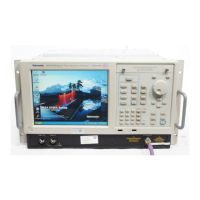
